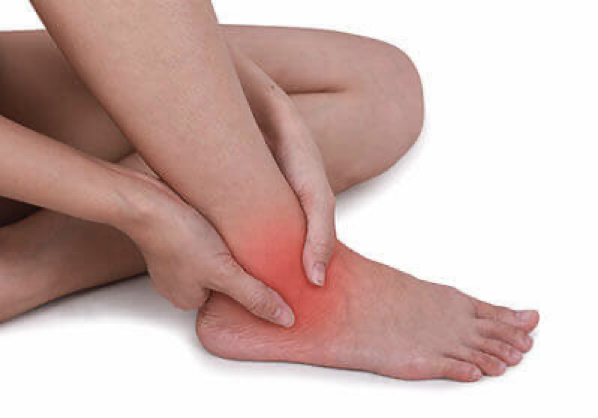
Is your Foot or Ankle giving you trouble?
It is estimated that in an average lifetime, we use our feet to walk the equivalent of five times the circumference of the earth. As we walk, the foot helps us to accommodate for the undulations of the ground adding to the stress to over 50 bones and joints that make up the foot and ankle. Fashionable footwear has added to foot and ankle problems, with women squeezing their feet into shoes of all shapes and sizes. Ageing and being overweight also increases the risk of having foot problems. The main causes of chronic foot pain are either degenerative or arising from a previous injury. Due to the close proximity of foot bones, arthritis of one joint rapidly affects other joints and bones. Thus prompt diagnosis and treatment is crucial to ensure good outcome.
Traditionally foot and ankle ailments seem to be the most neglected partly due to lack of awareness of treatment modalities available in the general public and partly due to lack of adequate knowledge available till date. Recent advances in foot and ankle surgery has gone a long way in helping foot and ankle specialists to provide a painless, stable and deformity free foot.
Some of the common foot and ankle problems include:
1- Ankle sprain and ankle instability
2- Achilles Tendinitis and plantar fasciitis
3- Bunion/Hallux Valgus
4- Collapsed inner foot arch or Flat foot
5- Lesser toe deformities
6- Foot & ankle arthritis
7- Ankle fractures and fractures of foot bones
Diagnosis:
Pain, instability, deformity or difficulty in walking are the most common complaints of patients with foot and ankle problems. A detailed history and thorough clinical examination will help your doctor find the cause of your symptoms and arrive at a diagnosis. X rays of the foot and ankle may need to be done and they should always be done in standing position as far as possible so that the alignment of the foot and ankle bones can be assessed accurately. Some blood investigations can help to rule out inflammatory arthritis or infection. Sometimes MRI, CT or ultrasound scans may be required to see the tendons, ligaments and abnormal bones not seen on X rays.
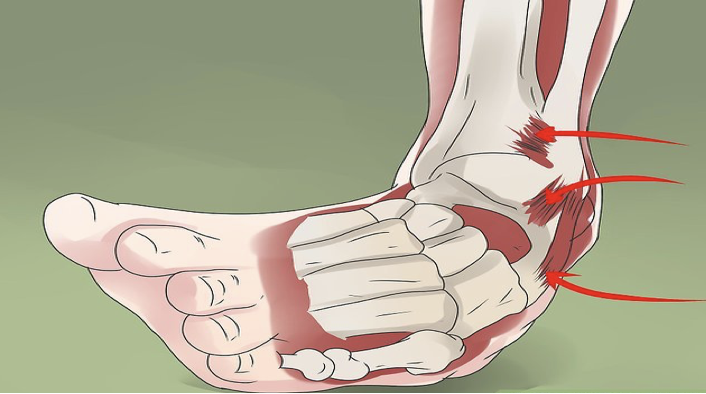
Ankle sprain and instability:-
This is the most common injury sustained due to a twisting injury to the ankle. The ligaments on the outer side of the ankle are most commonly torn causing pain, swelling and difficulty in walking. RICE therapy-Rest, Ice, Compression and Elevation forms the first line of management. X rays may be needed depending on the severity of the sprain. Most sprains heal within 3-6 weeks. Physical therapy in the form of ankle mobilisation, muscle strengthening and balancing exercises should always be done after the acute period. Improper care or neglect following an ankle sprain leads to persistent pain, giving way sensation, swelling and recurrent ankle sprains-the classical symptoms of instability. This is due to inadequate healing of ligaments or damage to ankle joint cartilage. Ankle instability may require bracing with orthotics(devices designed to redistribute the pressures across the foot and ankle) and muscle strengthening exercises in the initial period. Failure of conservative treatment requires surgical repair or reconstruction of damaged ligaments and tendons. Newer techniques in instability surgery help doctors to shorten the period of rehabilitation following ligament reconstruction surgeries.
Plantar Fascitis and Achilles Tendinitis:-

Achilles Tendinitis
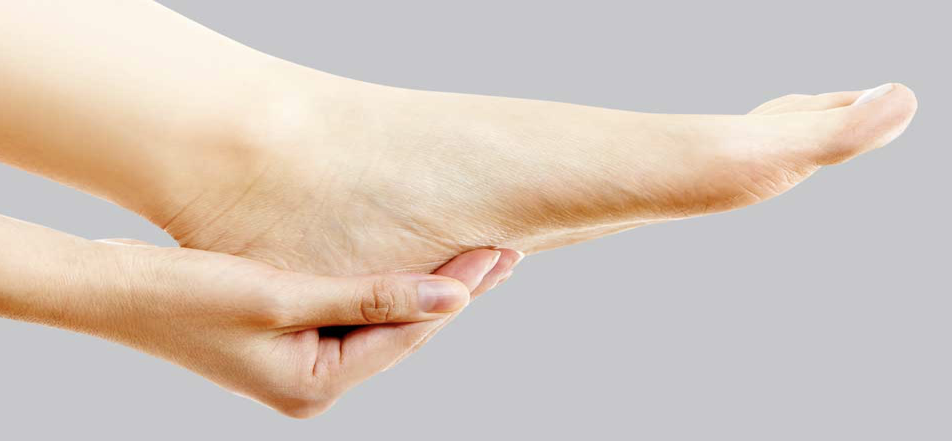
Plantar Fascitis:
Plantar fasciitis and Achilles tendinitis are inflammatory conditions around the heel bone. Plantar fasciitis is characterised by pain along the undersurface of the heel at the origin of the plantar fascia and Achilles tendinitis presents with pain and swelling on the back of the heel and heel cord. Pain is more during the first steps in the morning or after a period of inactivity. People with flat foot, high arch foot or with tight calf are more prone especially after an increase in activity level. Activity modifications, calf muscle and plantar fascia stretching exercises, custom made insoles, heel raises, night ankle splints and anti inflammatory medications help to relieve the symptoms in majority of cases. Resistant cases may respond to high energy shock waves focussed on the plantar fascia (Extracorporeal Shock wave therapy) or surgical lengthening of the calf muscle. Sometimes the Achilles tendon may tear due to excessive degeneration and repetitive stresses. This may require debridement of the bad tendon and surgical repair of the tendon or replacement with another tendon available in the back of the leg.
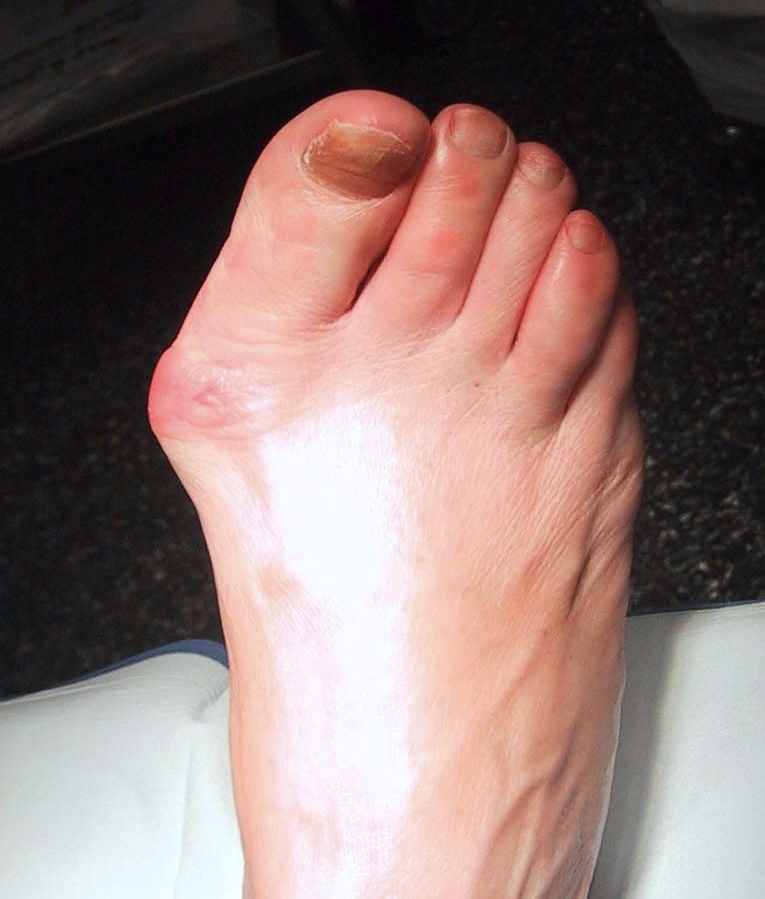
Bunion/Hallux valgus:-
Bunions are bony lumps that develop on the side of the foot or the base of the big toe. Bunions may be acquired genetically from our parents or due to the use of high heels and unsupportive narrow footwear. Long hours of standing, obesity and hormonal changes also contribute to their development. The big toe moves towards the other toes causing pain and discomfort and deformity of other toes as well. Mild deformities can be managed by bunion sleeves, footwear inserts/modifications and anti inflammatory medications. Severe cases may require surgical realignment of the big toe to correct the deformity thereby allowing you to wear normal shoes.

Flat foot or Pes Planus:-
People with flat foot have a loss of arch or instep in the inner side of their feet. The arch is maintained by a tendon called tibialis posterior. An abnormal attachment or degeneration of this tendon or abnormal fusion of some bones in your foot makes you develop a flatfoot. As the condition worsens it may give rise to pain in the feet and discomfort while walking. The posture may ultimately cause ankle, knee, hip and backache. Most flat feet are treatable with in shoe insoles, appropriate footwear and muscle strengthening and stretching exercises. Severe cases of flat foot require surgical correction by tendon transfers to rebuild the arch along with bony correction of the deformities. This helps to give a painfree normal looking foot.

Lesser toe Deformities:
Toe deformities involving 2nd, 3rd, 4th or 5th toes occur due to muscle imbalances in the foot. These deformities can make it difficult to fit into restrictive shoes and gives a sensation of ‘walking on marbles’ due to the prominent bones on the undersurface of the forefoot. Initially these deformities are flexible and can be managed without surgery with the use of toe splints and pads and wide and deep toebox shoes. However, as they become rigid over time, surgical correction may be required.
Foot and ankle arthritis:-
Arthritis of the foot and ankle may be degenerative in older people, sequel of diabetes, due to inflammatory conditions, past infections or long standing abnormal posturing of the foot. They cause pain and swelling in the foot and difficulty in walking. Mild to moderate symptoms are managed with shoe modifications, insoles and joint injections. With progression of arthritis, disabling pain and disability warrant surgical fusion of affected joints.
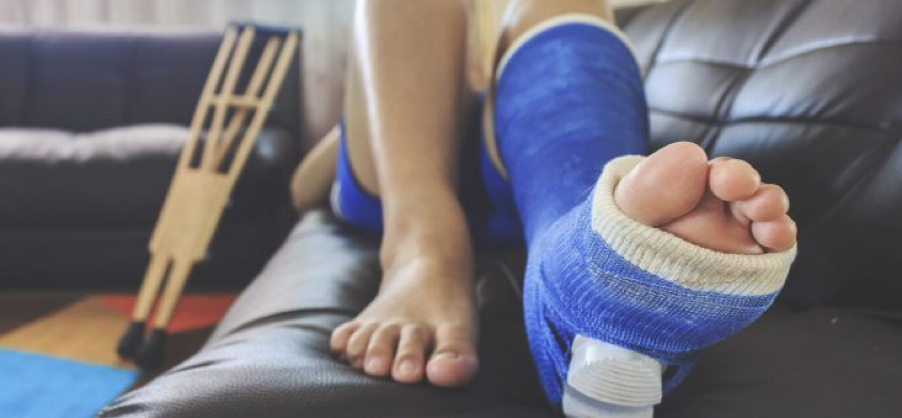
Ankle and foot bone fractures:-
There are 26 bones that make up the foot and ankle and any of these can get fractured during an acute injury. Ankle fractures are the most common injury following a twisting injury to the ankle and are most commonly mistaken for ankle sprains. When foot and ankle fractures are misdiagnosed or neglected, long term disability and frequent instability can result. Thus it is imperative to always consult your doctor for prompt recognition and appropriate treatment of foot and ankle injuries.

